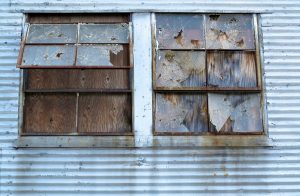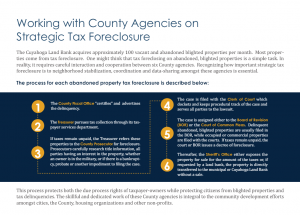
We’ve all driven through neighborhoods dotted with empty lots and crumbling buildings. Not only do these eyesores bring down property values, they also contribute to a sense of blight, lack of community pride and deteriorating morale. This is where land banks step in as a powerful tool for community revitalization.
What exactly is a land bank?
Land banks are public or non-profit organizations dedicated to acquiring vacant, abandoned, underutilized and tax-delinquent properties. Working as land stewards, land banks stabilize these properties and return them to productive use through in-house renovations, new home construction, sale to private owners, demolition, and preparation for short and long-range economic development. Land banks also foster creative re-use of properties for greenspace, gardening, stormwater management, and other innovative and ecological purposes.
How do land banks benefit communities?
Land banks create different opportunities, including:
- Blight Reduction: Land banks acquire vacant properties, eliminating eyesores and safety hazards and improving a neighborhood’s overall aesthetic and security.
- Affordable Housing: Land banks renovate and build homes and partner with developers and non-profit organizations like Habitat for Humanity to create affordable housing options, increasing homeownership opportunities and fostering economic stability. Habitat’s recent five-home build on W. 128th offers a great example of new affordable housing and community-building in a once vacant space.
- Economic Development: Land banks can strategically sell or lease properties for commercial development, attracting businesses and creating jobs. Cuyahoga Land Bank’s work in East Cleveland on the iconic Mickey’s building illustrates this process. The once-abandoned building is not only being designed as the focal point of the new Circle East District, but the $3.5 million work on this commercial building will bring new jobs, life and tax dollars to the city.
- Community Green Space: Land banks can work with community organizations to convert vacant lots into parks and green spaces, promoting recreation and improving residents’ quality of life. A prime example is the memorial pocket park in Cleveland’s Mt. Pleasant neighborhood. This former gas station site now serves the community as a beautiful and sustainable green space.
Step By Step: The process of land banking
- Property Acquisition: Land banks acquire vacant, abandoned or foreclosed properties through various means, including tax delinquency auctions, donations or direct purchases. (See how the Cuyahoga Land Bank works with county agencies on strategic tax foreclosures below.)
- Assessment: A land bank evaluates a property’s condition and potential, and then identifies potential land uses, including residential development, commercial space or green space.
- The Demolition Decision: Depending on the property’s condition, the land bank may demolish a structure to prepare the land for its new purpose. When necessary, land banks demolish unsafe or unredeemable structures. See how Cuyahoga Land Bank decides to demo or not to demo here.
- Renovation: Whether through in-house renovations, sales to responsible homeowners and rehabbers, or collaborations with a thriving network of Community Development Corporations (CDCs), hundreds of distressed properties in Cuyahoga County are renovated and restored to the tax rolls each year. See how a successful renovation can bring life back into a neighborhood here.
- Development Potential: Larger abandoned properties can offer considerable opportunities for meaningful economic and community development projects. The Cuyahoga Land Bank works closely with local governments, business stakeholders and developers to assemble and return vacant, tax-delinquent properties into productive parcels. These collaborations fuel job retention and creation, attract and retain residents and businesses, and raise the region’s competitive position.
Land banks can break the cycle of blight and act as a catalyst for renewal in communities plagued by vacant and abandoned properties. Ultimately, land banks empower neighborhoods to reclaim their potential, transforming them from areas of decline into thriving spaces for residents and visitors alike.


